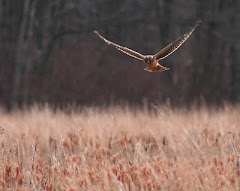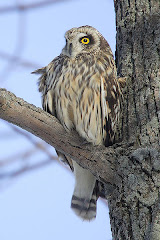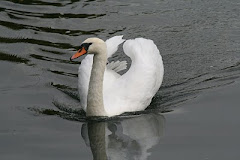
As I have said before, I am not a twitcher and I am not a great keeper of lists. News of a rarity fills me with neither excitement nor the desire to travel to remote places to add a tick to my yet-to-be-compiled lifetime list. Sometimes, though, an opportunity is just too good to miss!
In late April I heard that a Tawny Pipit, enticingly described as ‘scarce’ on the ‘Birdguides’ website, was less than half a mile from our house. Breeding in much of continental Europe and wintering in the Middle East or sub-Saharan Africa, Tetney Lock is not exactly on its migration route, but this is just what gives keen birders their adrenaline fix and I am not completely immune.
It didn’t take long to pack up my equipment, including several layers of insulating clothing - the easterly wind that brings rarities to this part of Lincolnshire is also notorious for bringing hypothermia to visitors. Two hours later and the group of half a dozen or so birders I had teamed up with agreed that the pipit had probably moved on. Disappointing as it was it must have been much worse for the man who had travelled all the way from Bristol. It was also less of a disappointment than my belated attempt to see a Steppe Grey Shrike two years earlier.
So rare in the U.K. is this bird that ‘Birdguides’ gives it the magnificent rarity classification ‘Mega’ and one had been seen regularly over several days just five miles from my home. ‘Mega’ means ‘not yet occurred in the British Isles or exceedingly rare, or otherwise highly desirable’ Even with that recommendation it wasn’t until I saw a couple of photographs showing it perched on the hat of a birder and then on a telescope and tripod that I decided to face the inevitable large number of birders and attempt to see it for myself.
I had done this successfully a few years earlier with an American Robin, also a ‘Mega’ bird in the U.K., which had been spotted on an industrial estate in North East Lincolnshire. A colleague described where it was and I made the short trip from work in the lunch break. Within five minutes of parking the car and looking into a couple of shrubs by the gate to one of the units I saw it. It was a thrill to see a bird so rarely seen in the U.K. but it was a sad experience too. Like an exotic caged animal it was far away from home in bleak and unnatural surroundings and I wondered how long it could survive. It was killed the next day by a sparrowhawk.
I was denied even these mixed emotions with the shrike. Before I reached my destination I became aware of a small group of birders trudging wearily through the mud towards the road. It seemed the sparrowhawk had been one step ahead of me this time and all that remained were a few feathers.
The failed pipit trip was far from unproductive though. I managed some great views on the way home of a group, or ‘trip’, of seven Dotterel feeding in a field of newly-germinated peas and I was informed by one of the birders that the White-tailed Eagle was still around the ponds near Ruckland, less than twenty miles away. The Dotterel is a wader with beautifully subtle colours, with the male’s more muted plumage giving a clue to his role in caring for the eggs and chicks – a stay-at-home dad long before it became fashionable.My early morning trip to Ruckland rounded off an eventful April. Half an hour after arriving at what turned out to be one of the most picturesque areas of the Lincolnshire Wolds I witnessed a magnificent sight. A huge bird with a wingspan of between six and eight feet, the largest eagle in Europe, appeared over the horizon with an escort of common buzzards, clearly uneasy about its presence so close to their nests. I had always thought of buzzards as large birds in the Lincolnshire context but I had to revise my judgement – their wingspan was approximately half that of the eagle.
I watched in the company of four or five birders from various parts of the country for an hour or so before the eagle made its way effortlessly over the hill and out of sight. I set off for home still feeling the exhilaration of that first view. Spending time with fellow birders had not been too bad. Maybe I would give up solitary wildlife watching and become a proper birder – then again, maybe not.


















.jpg)
























No comments:
Post a Comment